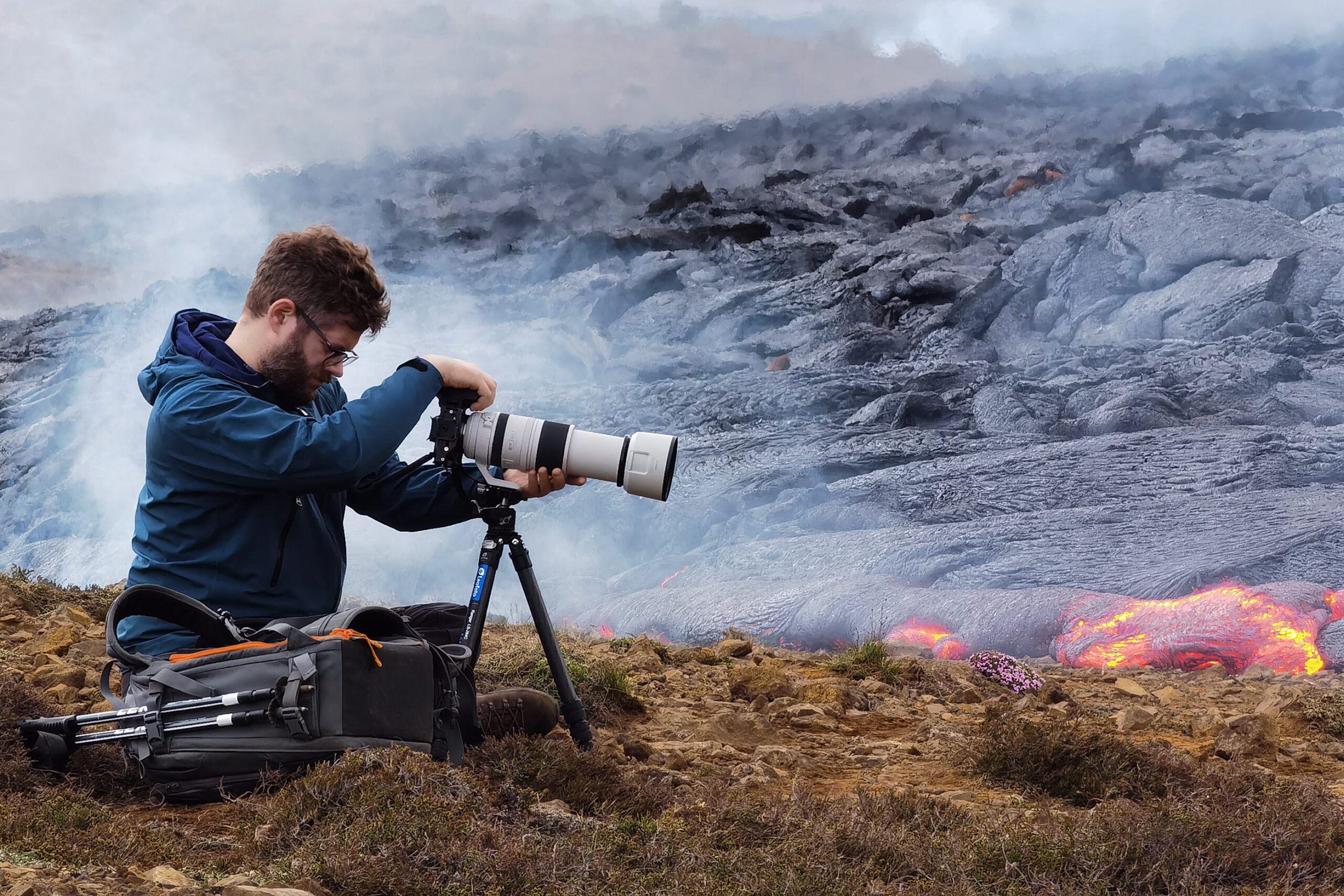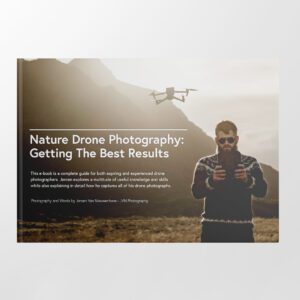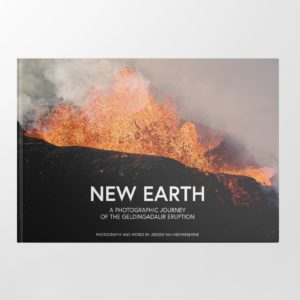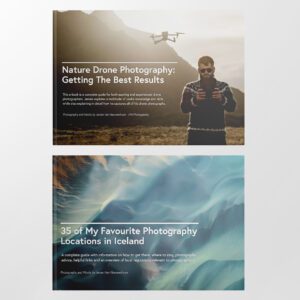I’ve been actively pursuing landscape photography for over 10 years now and I’m not going to lie: it’s been a steep learning curve at times. Many ten’s and probably even hundred’s of photographs later, I’ve reached a level where I’m happy with the work I produce. I’ve often heard say that the first ten thousand shots you take are probably your worst and there’s definitely merit to that. However, there are certainly ways to get to that point of being fulfilled, being happy, with your photography sooner rather than later. In this new blog, I want to share with you 4 landscape photography tips, or pieces of advice, which I wished someone would have told me when I first started out. While there aren’t any real shortcuts, it could help you get to where you are going quicker!
1. Spend Money On Travel, Not Photography Gear
As a starting landscape photographer, it’s easy to get carried away when deciding what photography gear to buy, or even what gear to upgrade. When I began my landscape photography career, I believed the outcome of what photographs I was able to take was directly related to having better gear. I suffered from a pretty bad case of gear acquisition syndrome, or GAS, as it’s called. And it seems many of us go through this phase. Photography is an expensive hobby and there’s always the next-best-thing out there. Manufacturers constantly improve their camera bodies with new features and neat tricks. It’s easy to get carried away by all those developments. In fact, it’s what most camera brands want you to believe: that you need all that shiny new camera equipment.

I captured this shot on my very first photography-focused getaway. I travelled to Iceland for a few days, just to see and photograph the northern lights. I captured this on the entry-level Canon DSLR at the time, the Canon EOS 550D. Read more about this photograph in its own ‘Behind the Shot’-story.
While it is true that some photography gear can allow you to get better results, the real improvement comes from practicing and doing landscape photography. Over the years, I have found that spending money on travelling, exploring and creating photography opportunities for yourself, is actually the way to improve your landscape photography skills. Spending money on photography workshops, or exploring a new area by myself, has done more for my photography than any new lens I have bought in recent years.
Sure, having sharper lenses or higher quality camera bodies, can increase the quality of the image overall. And a camera with vastly improved autofocus capabilities can help you increase your keeper rate. But what’s the real point if you don’t have money left to go out there and shoot?
2. Buying Cheap Means Buying Twice
I know, I know, I said photography gear isn’t as important as spending money on going out there and creating opportunities for yourself. However, at some point you will have to make investments in different photography gear. This doesn’t have to be a new lens or a new camera body but it could be a new tripod or filters for example.
Let’s get one thing out of the way right now: with ‘cheap’ I do not mean inexpensive gear but rather cheaply or poorly made products. There are plenty of good quality items that are cheap, while there are also plenty of poor quality items that are expensive. Doing your own research before blindly purchasing gear and listening to reliable reviewers who have actively used the products they are reviewing can both be valuable resources.
Part of the issue is with not coming to terms about the cost, or worth, of certain items. There is some photography gear which I’ve had to buy repeatedly because it kept breaking on me. The primary issue here was that I was too stubborn to understand that buying cheap, meant I would have to buy again and again. I’ve had this issue specifically with tripods and camera backpacks. My first few tripods would inevitably break due to, for example, the cold temperatures in which I used them (broken snap locks). With tripods and camera bags, it’s undoubtedly something many photographers go through, asking yourself the age old question: ‘Do I really need to buy a tripod or camera backpack which is that expensive?’. The reality is that many photographers spend quite a bit of money on expensive lenses and camera bodies and then try to cheapen out by purchasing low quality, low cost accessories.
The real question you should ask yourself is: ‘Do I want to put my 5000 Euro camera on top of a 100 Euro tripod made of cheap plastic or in a cheap, flimsy camera backpack?‘. I’m sure you know the answer!

I’ve used my fair share of tripods and photo backpacks over the years, starting out with cheaply made ones. which I always regretted afterwards. I’ve been a very happy user of f-stop photography backpacks in recent years and just published a review of my current bag.
3. Educating Yourself Online Has Never Been Easier
This landscape photography tip will make me sound much older than I actually am but hear me out! During the first years of my photography career, online landscape photography content was almost non-existent. Let alone you could access varied and brilliant landscape photography video content on, for example, YouTube as you can today. The only ways to educate yourself was to follow classroom courses or buy books that aimed to help you understand photography. With the huge surge in landscape photography focused content online, learning (new) photography techniques has become easier and more accessible.
YouTube arguably has one of the largest photography focused content libraries to date. While many YouTube creators have tutorial-style videos available, there are also many creators who publish vlog-style content which allows you to get insight into how certain professional landscape photographers work. Before YouTube and vlogging getting insight into a photographer’s process was unthinkable unless you participated in specific photography workshops.
When looking outside of YouTube, there are many more ways to educate yourself and improve your understanding of photography. Many landscape photographers share knowledge via their social media or by selling e-books. For example: I myself educate anyone who has an interest in drone photography or wants to take their aerial photography to the next level, with a comprehensive e-book on drone photography.

When landscape photography YouTube channels became more popular, I used some of them to begin my journey into drone photography. I’ve combined my knowledge and tricks into an interesting drone photography e-book – passing on knowledge I have gained.
Here are some of my favourite landscape photography YouTubers, which I watch regularly:
Which YouTube landscape photography channels do you follow? Make sure to let me know in the comments. I’m always looking to discover new and interesting YouTube channels.
4. Doing Less Means Achieving More
For my final landscape photography tip, I want to share the most valuable lesson I learned. For the longest time, I went about my landscape photography in a way that involved visiting as many locations in as short amount of time as possible. Because I spent a lot of my time preparing for a photography-focused trip, I felt this was a good approach to get as much bang for my buck as possible. In reality, I ended up with maybe a lot of variety in locations but very few truly compelling shots.
Only a few years ago, I decided to reflect at how I was approaching my photography and ended up slowing down considerably. Especially with my work surrounding the 2021 volcanic eruption of Fagradalsfjall, I decided to work in a more methodological way by focusing on only specific aspect. This is something I detail in my last ‘Behind the Shot’ blog feature and in my first book ‘New Earth’.
Slowing down, doing less, means you get to achieve more in a photographic way. Visiting fewer locations but spending much more time in time, enables you to look around, find new perspectives and wait for better light. It will allow you to put more intention and thought into your photography, which will dramatically improve your work.

I began exploring this ‘new’ way of photography in 2021. One of my projects that year took me to Grímsey, a remote island off the north coast of Iceland. I spent 5 whole days photographing the puffins to perfect my shots. I liked it so much I now organise a puffin-focused photo workshop there.
What Landscape Photography Advice Do You Have?
What landscape photography tips have changed the way you worked? Which tips do you wish someone shared with you when you first started out shooting? Let me, and us, know in the comments!
Discover Jeroen’s Photo Workshops in Iceland, Greenland & Beyond
Ready to take your photography to the next level? Join me, Jeroen Van Nieuwenhove, on unforgettable photo workshops in Iceland, Greenland, Antarctica and other exciting destinations. Whether your passion is wildlife photography, bird photography, landscape adventures, or mastering drone photography, each workshop is designed to give you hands-on guidance in some of the world’s most spectacular locations.
From puffins in the midnight sun to Arctic foxes in the wild, from glaciers and volcanoes to dramatic coastlines seen by drone – these journeys are more than workshops; they’re once-in-a-lifetime experiences. Group sizes are kept small, ensuring personal mentoring and plenty of shooting opportunities.
Looking for something specific? Check out Jeroen’s…
- Wildlife & Bird Photography Workshops (Puffins, Arctic Foxes)
- Drone Photography Workshops
- Photo Workshops in Iceland
- Photo Workshops in Greenland
Spots are limited – secure your place today!
What Previous Participants Shared About Their Experience
These reviews are verifiable on Jeroen’s public Google Business profile.
Support Jeroen’s Work
As an independent photographer, Jeroen partially relies on your support to keep producing worthwhile content such as blogs, photographs, books and much more. If you want to support his work, it is possible to do so by buying his e-books & books or prints.
You can also sign up to the newsletter to stay up to date on new blog posts, projects, workshops and other interesting information.
Thank you for considering!














